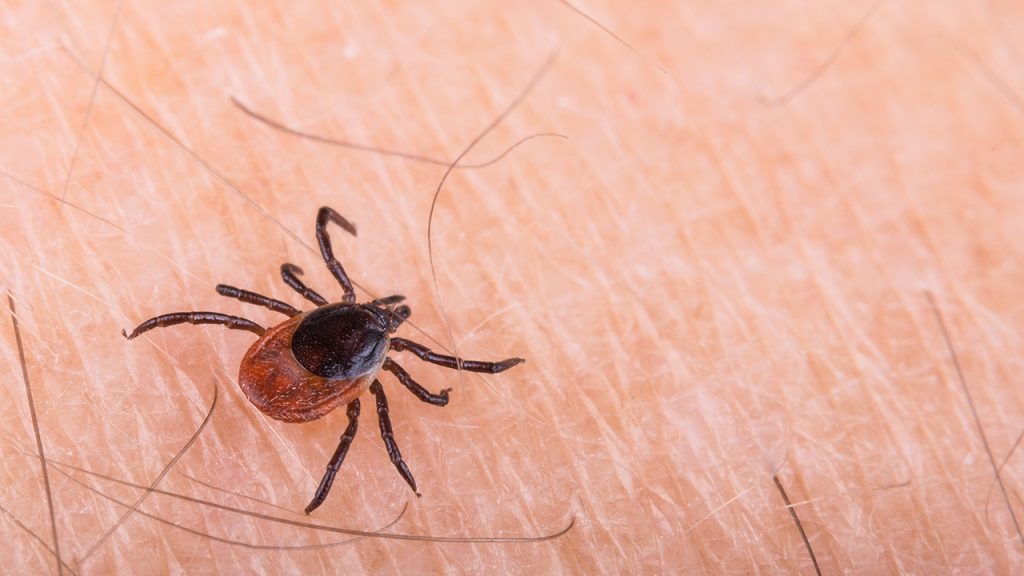As summer gets underway, one thing is clear: It’s going to be a big year for ticks. That’s according to Tom Daniels, Ph.D., director of Fordham’s Louis Calder Center, a biological field station in Westchester County, New York.
Daniels has spent nearly 40 years studying the tiny blood-feeding arachnids at Calder, working in concert with the New York State Health Department and dozens of undergraduate researchers. Last week, a staff member sampling for ticks on Calder’s bucolic grounds “came back with 20 nymphs—a lot for this time of year,” Daniels said.
The weekly tick index published by the Calder Center ticked up to 8 out of 10 in early June, indicating a high risk of of being bitten by a nymphal or adult deer tick—which carries Lyme disease—in the New York tristate area. After decades of research into ticks, Daniels is well prepared to answer some of the most common questions about them.
When do I have to watch out for ticks?
Tick season is longer these days: Nymphal ticks have gradually become active about three-and-a-half weeks earlier, in late April rather than mid-May, possibly because of climate change, Daniels said. “Our thinking that you’re really not at risk from this tick until a little bit later in the year has changed,” he said. Nymphal ticks are active in the summer; adult ticks emerge in the early spring and in the fall.
How small can ticks be?
Adult deer ticks—also called black-legged ticks—are about the size of an apple seed, but nymphs, which cause far more cases of Lyme disease, can be as small as a poppy seed.
Where on our bodies do ticks attach?
Ticks can fasten onto your legs but also the upper body—for instance, if you’re handling wood from a wood pile, a “notoriously good” tick habitat because it’s a home to rodents, which are common hosts for ticks, Daniels said. They can also reach your upper body if you’re sitting on a rock wall, another good tick habitat, he said.
How do I know if I’ve contracted Lyme disease?
Lyme disease has been called “the great imitator” because it can manifest in so many ways, but a doctor’s test can confirm it, Daniels said. One telltale sign, he said, is a “bullseye” rash, which expands outward from the bite over the course of a few days or a week.
The Centers for Disease Control and Prevention reports approximately 36,000 to 38,000 cases of Lyme disease in America per year, but “it’s probably 10 times that, easily,” Daniels said. “There’s probably easily half a million people getting Lyme disease every year, and that’s what makes it the most important vector-borne disease in the country.”
Learn more about preventing tick bites and Lyme disease on the CDC website.

